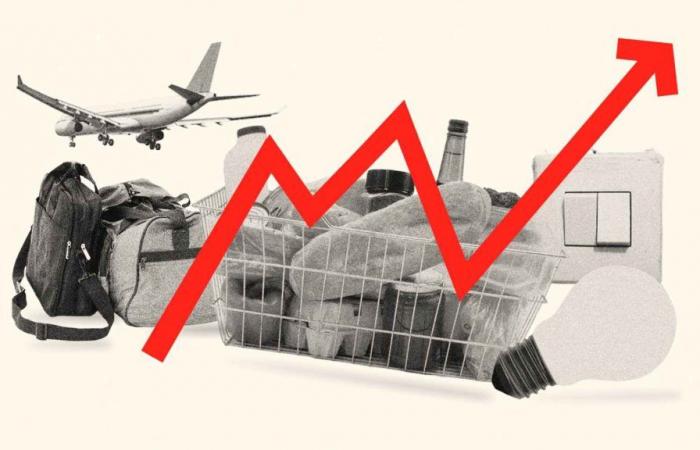
After a year of decline, inflation has reemerged as the main short-term concern for the Spanish economy. Although below the highs reached after the pandemic and the start of the war in Ukraine, the price increase remains high and has stagnated at rates above 3%. The rate hike policy would not have sufficiently moderated demand and tax relief measures implemented by the Government have sustained consumption. A cocktail that has kept price increases alive.
The recent reports from the Bank of Spain and BBVA Research have revised upwards their growth forecasts of the Gross Domestic Product (GDP) this year —at 2.4% and 2.5%, respectively—, but also those of inflation. Specifically, the regulator estimates that the Consumer Price Index (CPI) this year will rise, on average, 3%, while the study center of the blue bench raises it to 3.3%.
The Savings Bank Foundation (Funcas) has also increased its inflation forecast this week. At 3.3%, specifically. Both agree that the fundamental cause – although not the only one – is the resistance to lower prices in services, especially in tourist.
The arrival of visitors does not stop and, furthermore, it increasingly extends to more times of the year and to more places in Spain. It is not that the total figure is spread over more months and territories, but rather that the diversification of destinations and the deseasonalization of tourism is opening the door to the arrival of more tourists.
As can be seen, restaurants and hotels They have maintained inflation around or above 5% since mid-2022. In a detailed analysis, passenger transport by sea and tourist packages marked the largest price increases in May (22.2% and 17.7%, respectively), only surpassed by olive oil (62.8%). .
But the problems with rising prices go beyond the pressures derived from tourism. The report Spain Situation BBVA Research also notes that core inflation—which excludes food and energy prices—has also stopped falling recently. This is due, in part, to labor market dynamismwhich has led to an increase in wages.
Furthermore, the increase in oil prices, despite the recent stability in commodity costs in general, is also helping to keep inflation high. Only 40% of products, according to the CPI, show a price growth of less than or equal to 2%.
For its part, expansive fiscal policy—that is, aid to households—is contributing to maintain aggregate demand at high levels. This, in turn, exerts upward pressure on prices and makes the work of central banks difficult to contain inflation.
Expansive policies that include the reduction in VAT on food – which the Government has said it intends to extend – or on electricity, certain tax benefits such as tax credit or reductions in personal income tax by the autonomous communities and, in general, social aid and benefits. Measures, in short, that have allowed households to have more resources with which to consume.
Future risks
Thus, downward resistance in inflation has become one of the main risks for the immediate future. If economic activity does not weaken sufficiently, especially in the services sector, or if there is a stronger-than-expected manufacturing recovery, the inflation convergence to the 2% target is in question.
The abundance of liquidity and historically high savings by households are translating into a lower impact of monetary policy, just at the time when the European Central Bank (ECB) has already begun to lower interest rates. In his last Quarterly Reportthe Bank of Spain pointed out precisely this delay in the transmission chain.
Angel Gavilan, general director of Economy and Statistics of the regulator, assured this week that the impact of monetary policy “is always faster on growth than on inflation.” That is to say, what is foreseeable is that, although the rate cuts have already begun, the effect on prices will not cease.
The next few months, therefore, will be decisive. The high weight of tourism in Spain puts even more upward pressure on the prices of services, but the downward resistance of inflation of this component is common in Europe and the United States. If that does not change and the economy continues to show the same dynamism as to date, central banks could reconsider their monetary policy and keep interest rates high longer.





